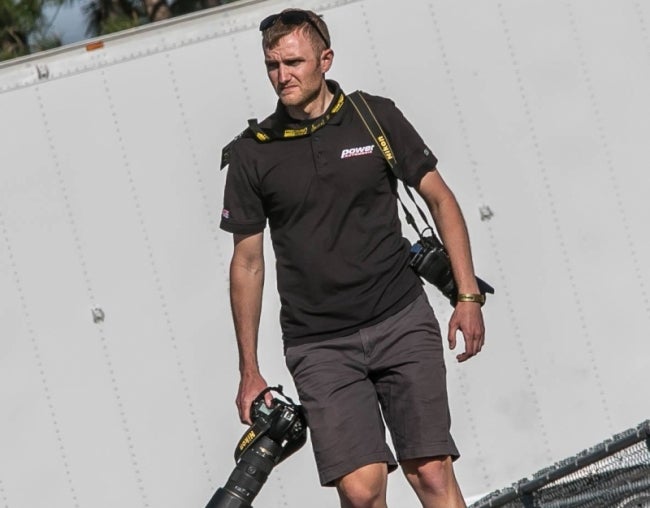The mind-altering performance of thrust-powered drag racing machinery has been well documented over the decades, with all-time record elapsed times and speeds that surpass anything that wheel-driven automobiles and motorcycles have been able to achieve. The availability of the fuels, the engineering involved, and the sheer danger of the terminal speeds of such machines have made them relatively rare since the 1970s, but there are still hearty souls around the world willing to invest their efforts into various alternative forms of power and propulsion in the name of entertainment and infamy.
Graham Sykes, from Bedale, North Yorkshire, England, has in recent years designed and built a a steam-powered rocket bike known as “Force of Nature” that initially reset steam-powered motorcycle records and has gone on to produce staggering numbers.
At last weekend’s FIA/FIM European Finals at Santa Pod Raceway, Sykes recorded his quickest elapsed time to date, with an incredible 3.197-second 1/8-mile at a coasting 179.93 mph, and for extra measure, a 1/4-mile time of 5.834 at only 163.63 mph.
“Force of Nature” converts the energy created by superheated, pressurized water directly into thrust propulsion. The system uses a one-off docking station that serves as the heat source. A 20 kW burner fueled by hydrogenated vegetable oil supplies hot gases to a manifold that feeds six burner tubes. Each tube contains turbulators to increase heat transfer as they pass through a pressure vessel holding up to 100 liters of water. Under operation, water in the vessel reaches 250ºC while pressurized at 40 bar (580 psi). The dock charging cycle requires four hours of continuous heating to get the system ready for a pass.
Once disconnected from the dock, the bike is placed on the starting line and relies entirely on its onboard stored energy. The launch sequence is relatively simple: Sykes first opens safety valves to prepare for the run, and once ready, engages a secondary valve system with a button. Pressurized water then accelerates to roughly Mach 1.1 through twin de Laval nozzles, where it undergoes flash boiling and converts to high-velocity steam. This reaction produces the thrust that drives the motorcycle forward.
The physics of the system give the machine a rather wild performance curve. Because thrust is derived from a limited water supply (about 195 lbs. worth), the total mass of the motorcycle decreases as steam is burned off. This reduction improves the power-to-weight ratio mid-run, resulting in continuously increasing acceleration until the pressure vessel approaches depletion. Rather than the power fading with time, the bike keeps accelerating until the system is empty and then it begins to coast.
The chassis is engineered to be stable at extreme speeds under thrust, with a long wheelbase and low center of gravity; this allows Sykes to steer the bike with what he says is very subtle rider input.
Most staggering in Sykes’ record-setting performance was the .738-second 60-foot time and the 1.968-second 330-foot clocking. To put those numbers into context — Clay Millican owns the quickest run in the history of Top Fuel with a 3.628, and on that pass he carded an .809 short time, a 2.047 to the 330, and 2.897 at 296.31 mph to the 1/8-mile. Sykes’ motorcycle is only under power for 1.9 seconds (or about 300 feet), but is vastly out-accelerating a Top Fuel car to that point, doing so with G-forces upwards of 6.8 at launch.
“The highest G-force that we have seen is 6.8, but it was too much to handle, and I came off the power. We normally accelerate at 0-119 mph in the first second, and 66 mph in the next second, averaging 92.5 mph a second. The six-plus G’s is in the first couple of tenths, and we average 5.4 G in the first second and 3 G’s in the second. We go 0-60mph in 0.4 seconds, and 0-100 in 0.8 seconds.”
Impressively enough, “Force of Nature” is not tapped out. Sykes intends to install a larger water vessel on the bike, which will allow it to remain under power for about three seconds. He will also be revising the water outlet design to make it more efficient so he can run smaller nozzles to keep the power level the same. ” This will hopefully allow us to run to around 700 feet, and if all goes to plan eventually run a 2-second 1/8-mile and a 4-second 1/4-mile We expect it to top out at about 260 mph at the 1/8-mile before it coasts.”




















